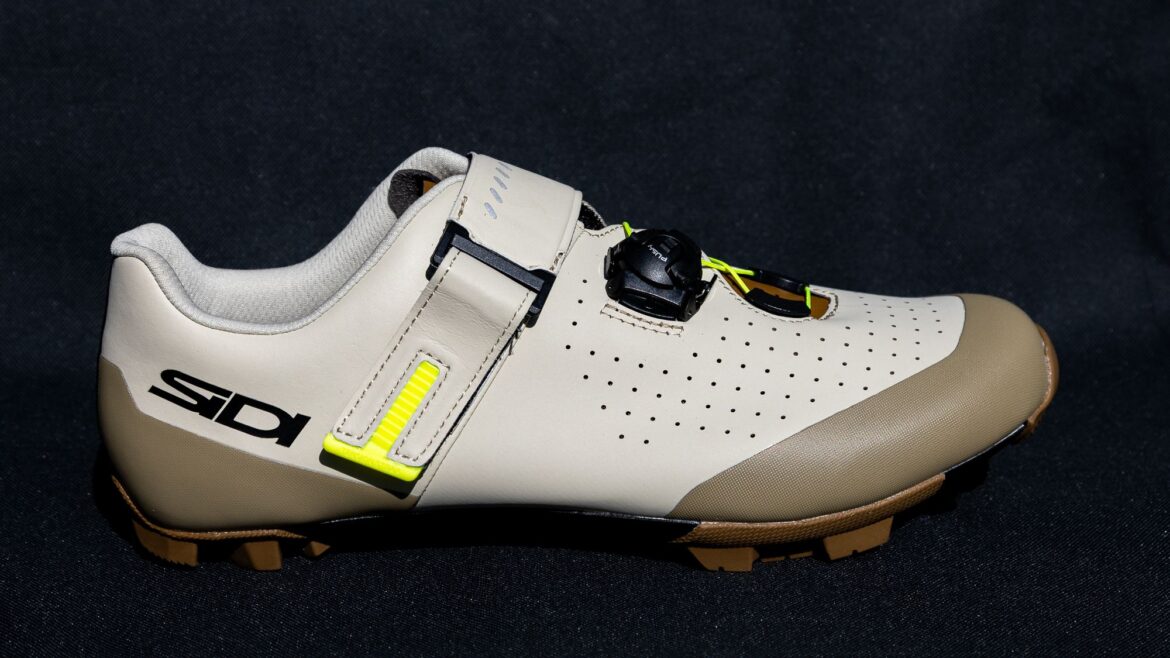Aimed at off-road riders who want top-notch performance (and are prepared to pay for it), the Physis sits towards the top end of Sidi’s range.
Although the official name is the Sidi Physis MTB Shoe, it is, in fact, suitable for both mountain bike and gravel bike riders, as well as road riders who prefer a more walkable sole unit than three-bolt cleats allow.
Sidi claims that the Physis is ‘built for XC racing and off-road adventures’, but more of its suitability for those two quite different genres later.
Construction
The foundation of the Physis is its XC2FC full carbon sole. Rated as 11/12 on Sidi’s own stiffness scale, the sole is very, very stiff. The rubber tread is relatively minimal in terms of coverage, with just a few centimetres at the rear and another few centimetres of lugs around the cleat area, although the tread is reasonably deep. The very front of the shoe has a small area of rubber that is more textured than lugged. The shoes also come fitted with plastic toe studs to aid grip in very muddy situations, such as CX racing.
Carbon sole, toe studs and open tread indicate the Physis’ intent
(Image credit: Tim Russon)
The upper consists of a lined synthetic material with perforations for breathability and reinforced sections over the toe and around the heel. The Unum Ergo tongue is stitched in place on one side, so there is no annoying slippage, and the top of it has small cuts in it to prevent ankle irritation. Fastening is accomplished by a combination of Sidi’s own Boa-style dial and a Velcro strap, with the Velcro also housing a toothed plastic insert for added security – a system Sidi calls Plustrap Closure.
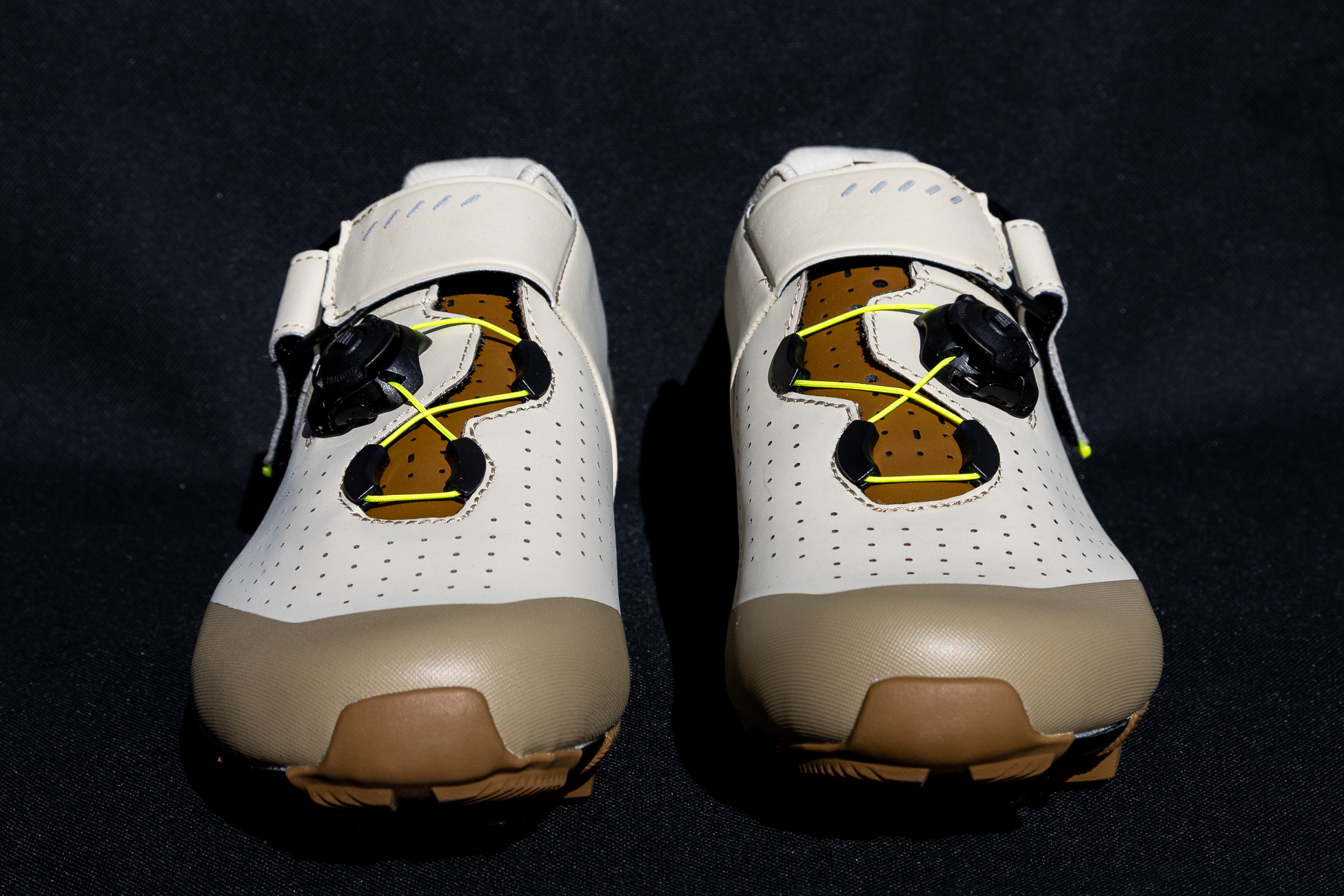
Ratchet and Velcro closure system
(Image credit: Tim Russon)
Internally, there is a fairly basic footbed and a textured heel area to help hold the foot more securely.
Perhaps most importantly, the Physis is made on Sidi’s new Millennium last, which is noticeably bigger and roomier than Sidis of old. I previously needed a size 45 in Sidi, but now my usual size 44 fits me just fine.
The weight on my scales was 750g for a pair of size 44, without cleats. It is available in Matte Violet, Matte Sand, Black and Ice White, with sizes from 40 to 48, including half sizes in some colours.
The ride
Cleats fitted and clipped in, off I toddled on my first ride. I hadn’t even ridden the few hundred metres to the bridleway before the stiffness made itself apparent; even on a fat-tyred gravel bike, the rigidity of the pedalling platform was immediately noticeable, with every pedal stroke eliciting an instant response from the bike. I have ridden SPD pedals off-road for more years than I care to remember, and used many pairs of clip-in shoes and have never thought that the shoes felt too soft or flexible, but the Physis highlighted the difference between standard shoes and more performance-oriented ones.
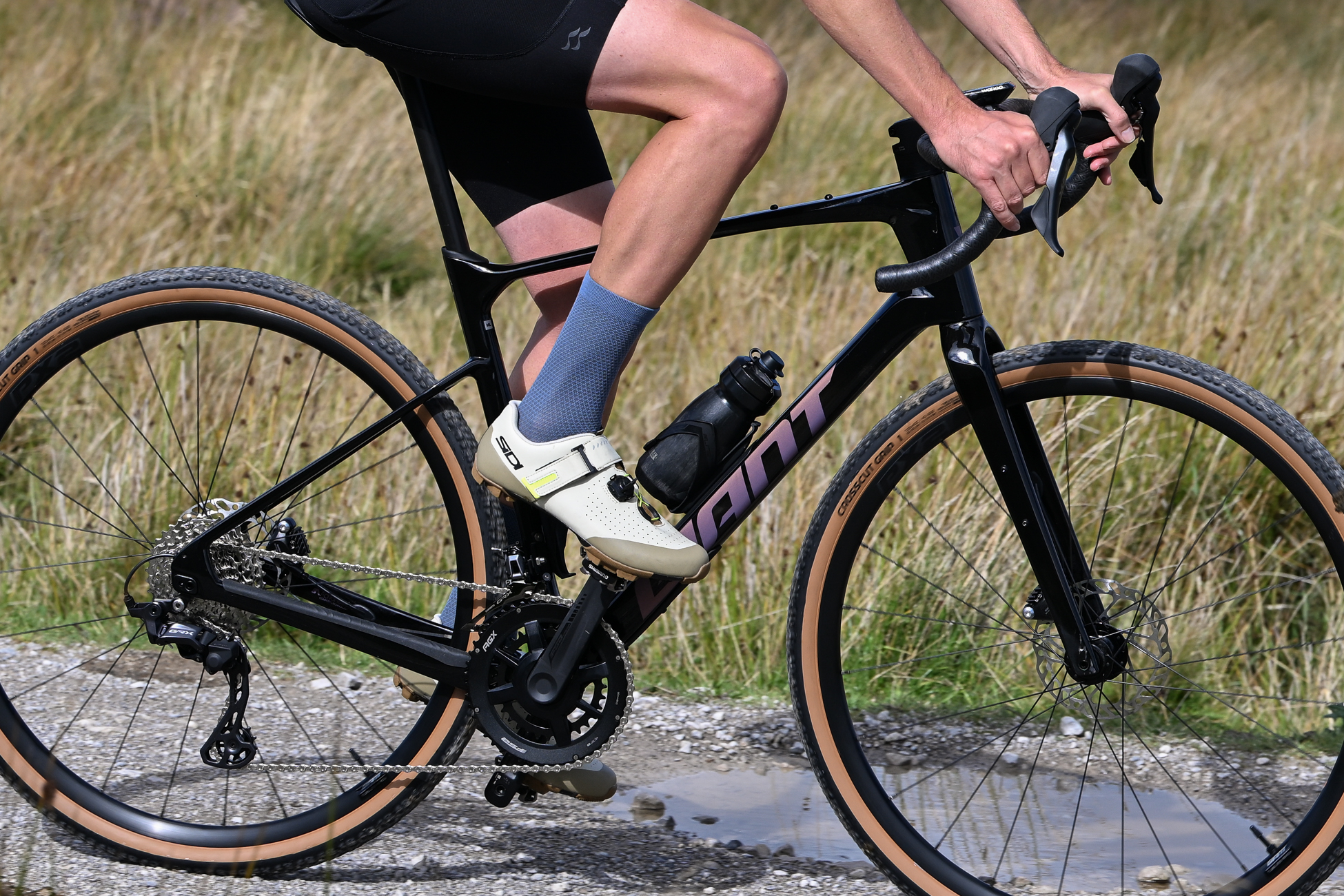
Plenty of off-road efficiency on tap
(Image credit: Andy Jones)
This performance is also helped by the grippy, textured material inside the heel of the shoe. This grips the heel very securely, preventing any lift or movement and maximising pedalling efficiency.
Of course, there is a downside to this incredible efficiency, and that is when you aren’t pedalling; the stiffness is just as noticeable when you are walking around in them. On the odd sections of hike-a-bike that I encountered, the Physis were not as comfortable to walk in as other, less stiff, shoes and resulted in me skittering about a bit on rocky climbs. This ungainliness wasn’t helped by the plastic toe studs (or ‘crampons’ as Sidi calls them), which interfered with the natural roll of the foot. Luckily, one fell out at some point, and I just unscrewed the rest and taped over the holes (I failed to find any blanking studs online).
On softer cyclo-cross type terrain, this wouldn’t be an issue, and the shoe’s stiffness would prove very beneficial in a race scenario.
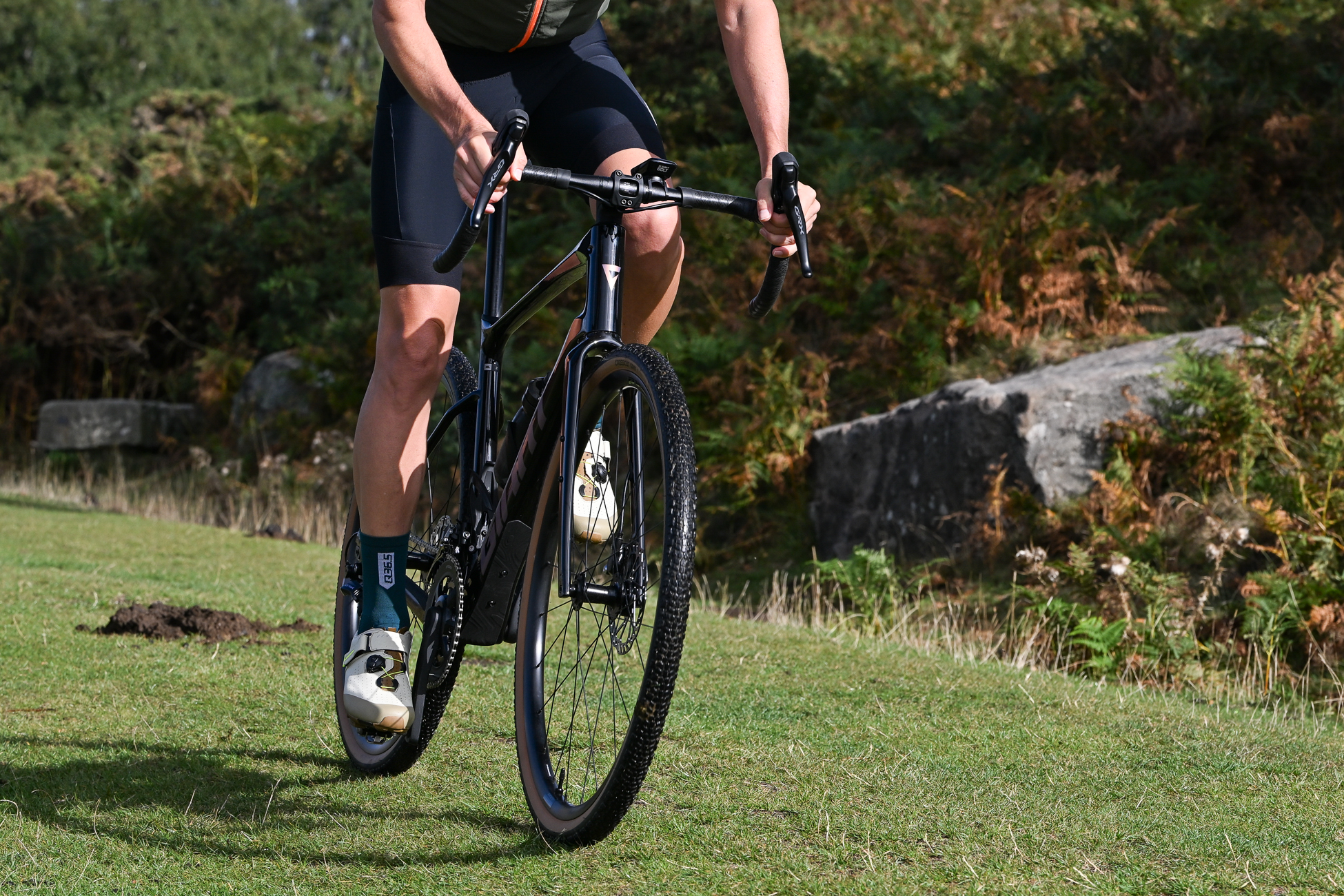
Pressure on the pedals elicited an instant response
(Image credit: Andy Jones)
I was a bit bemused by the Physis’ fastening system. Almost every shoe I’ve used that only has one Boa-style ratchet uses it at the top of the shoe and relegates the Velcro strap to lower section duties, but the Physis does things the other way around. This makes on-the-move adjustments more awkward, and on a shoe this expensive and so performance-biased, it seems a little cheap not to use two ratchets.
The Velcro does include the nifty Plustrap Closure toothed insert, so that the Velcro doesn’t slip, but to me, that just highlights that Velcro isn’t ideal at this level.
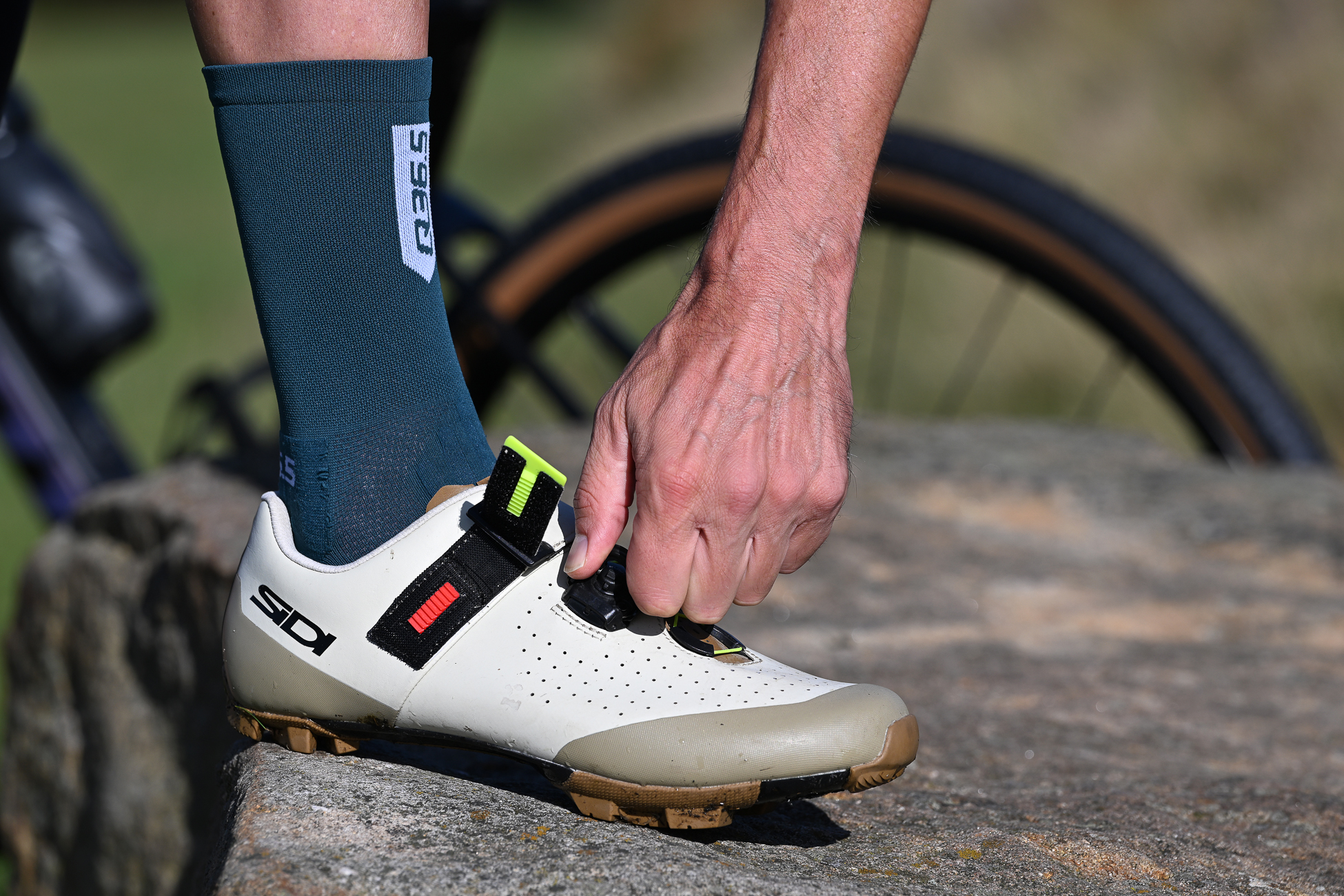
I’d have preferred the Velcro and the ratchet to be the other way around.
(Image credit: Andy Jones)
Even in the pale Sand colourway, the perforated upper was easy to keep clean after mucky rides with just a quick wipe. The synthetic material doesn’t feel like it is going to be very breathable, but I had no issues on warm summer rides, thanks probably to the multiple small holes over the forefoot doing their ventilation job. Of course, they aren’t going to do a very good job of keeping rain and puddles at bay in the winter, but you can’t have everything.
Overall comfort for me was good, within the parameters of a stiff race-style shoe. I was happy to pick them off the shelf and wear them on rides that I knew involved no walking, and even chose them for a two-day road bike trip around the Yorkshire Wolds as a good compromise between road shoe stiffness and MTB shoe convenience.
Aside from that, I used the Physis on lots of local gravel and mountain bike rides over the summer, and I very much enjoyed the road-shoe-like efficiency of them; having a rigid platform when pedalling really does have a noticeably positive effect on power transfer.
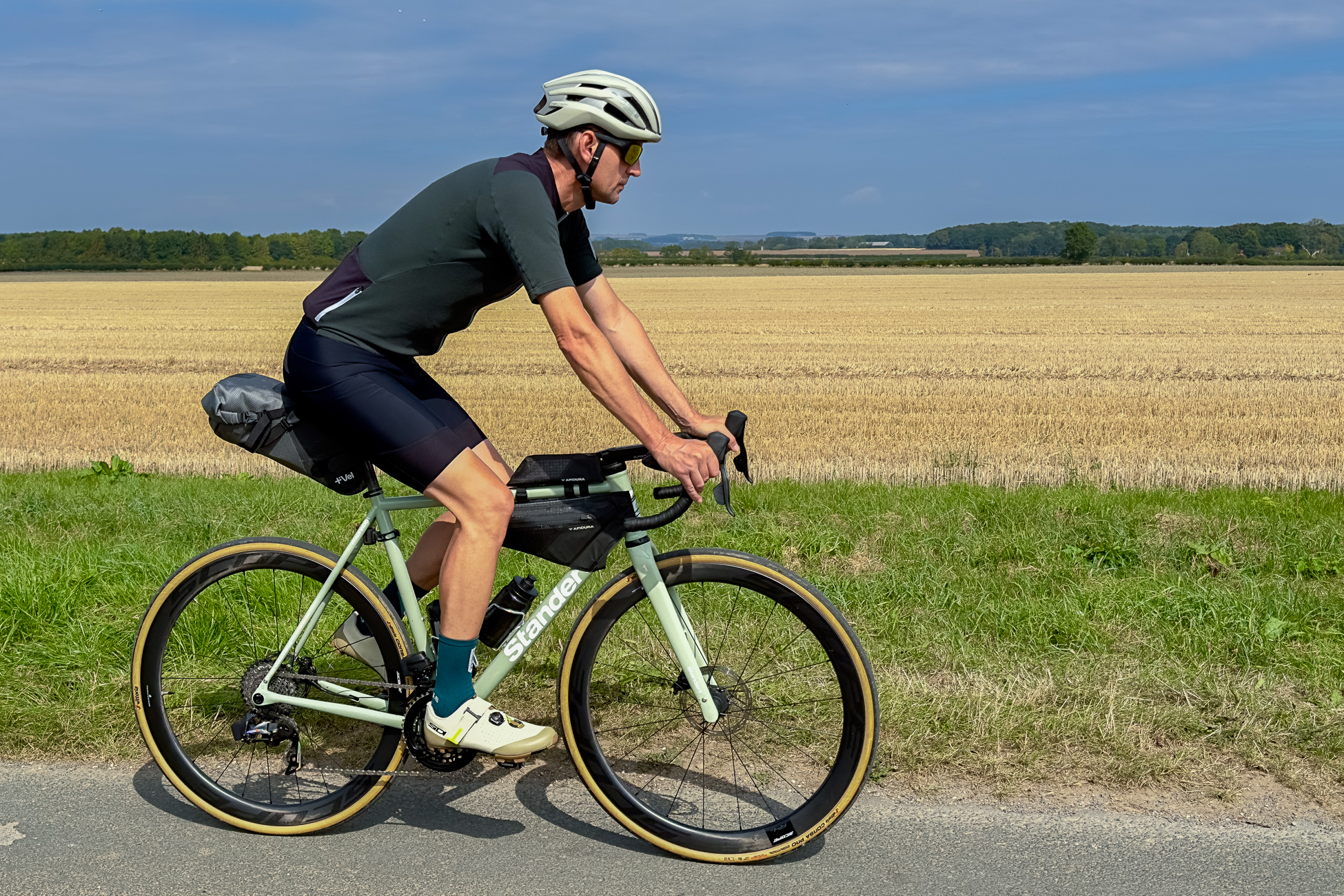
I happily used the Physis for a two day tour of the Yorkshire Wolds
(Image credit: Kim Russon)
Value and conclusion
If you want no-holds-barred off-road performance for racing or setting PBs, then the Physis should be on your shortlist. Stiffness and pedalling efficiency are superb, and the new Millennium last brings Sidi’s fit in line with most other cycling shoe brands, although it’s a shame that Sidi couldn’t spring for two ratchet fastenings per shoe.
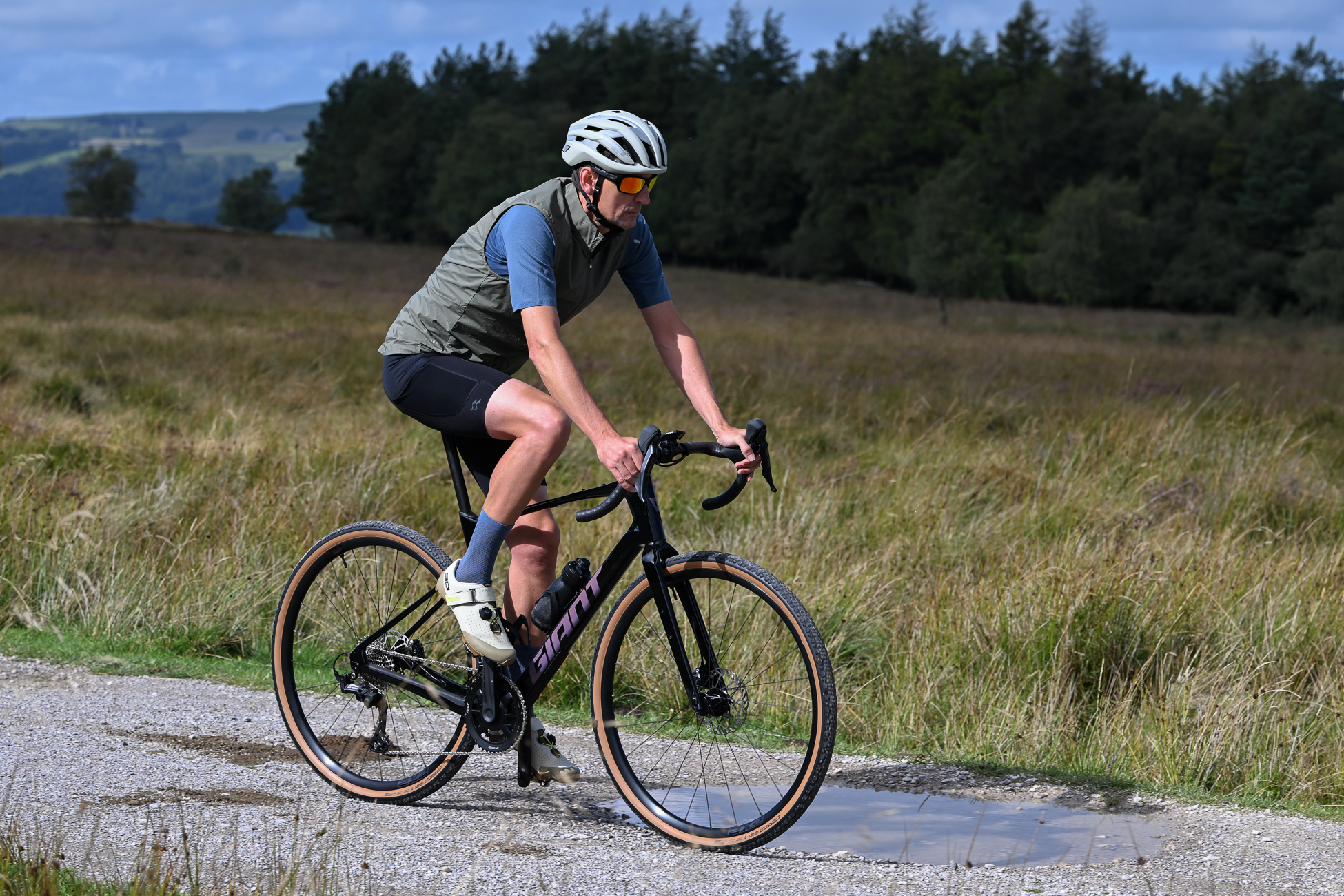
The Physis are best suited to fast paced rides where speed is key
(Image credit: Andy Jones)
However, for the rest of us, the Physis is probably overkill as it is far better suited to full-bore efforts at the head of a gravel race than it is to tottering into a mid-ride cafe for a flat white and slice of cake or hiking up an unrideable section of trail. Furthermore, with a £329 price tag, there is a heavy price to pay for that off-bike inconvenience, which many will find unpalatable enough on its own.
